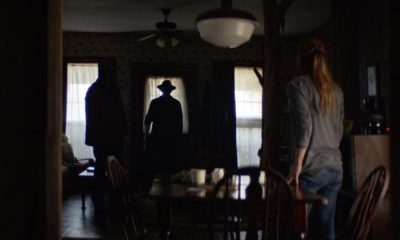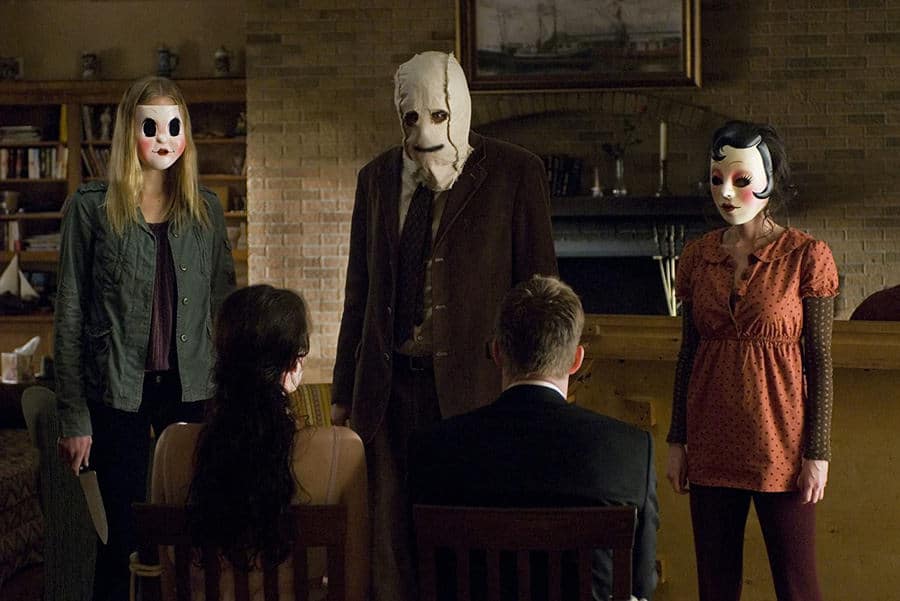
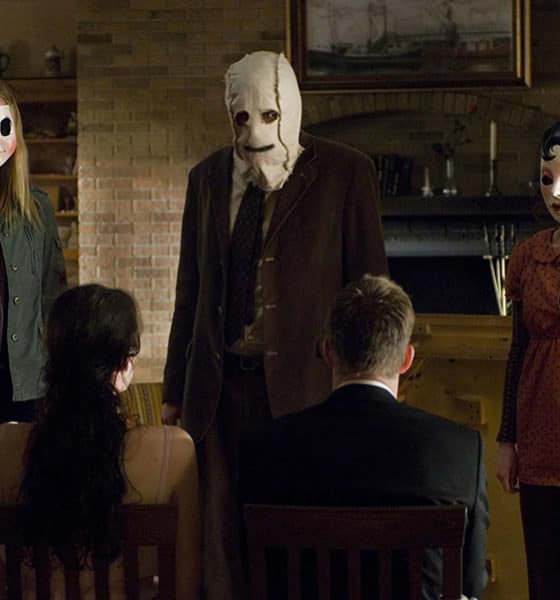
Interviews
tomandandy’s Tom Hajdu reflects on ‘The Strangers’ soundtrack (Interview)
Published
5 years agoon
tomandandy’s Tom Hajdu reflected back with The Natural Aristocrat on The Strangers’ one of a kind isolating soundtrack, a milestone in the horror genre. A blend of stillness & suspense, preying on the inherent human fear of sounds that go bump in the night.
Nowhere to hide, no place to run. Fight or flight mode in the dead of night, tomandandy’s The Strangers soundtrack in the spotlight. Composer Tom Hajdu, one-half of the musician duo behind production powerhouse tomandandy (along with Andy Milburn), spoke to The Natural Aristocrat® about the inspiration of a score that tapped into the most primal of senses. Fear. Dread. Confusion. Terror. Ensnaring the audience’s collective body in a state of alarm from opening to curtain call. An exercise of dark minimalism, where every last detail is meant to send a physical message both actively and to the subconscious.
A soliloquy without words made of cello, layering the calm before the storm. The Strangers and its soundtrack is one of the horror genre’s first-rate examples of synergy, sound perfectly enhancing the picture to great effect. The soft pillowy tones of tracks like “Apology” gently causing viewers to let their guard down… Before snatching their perceived safety of home right out from under them.
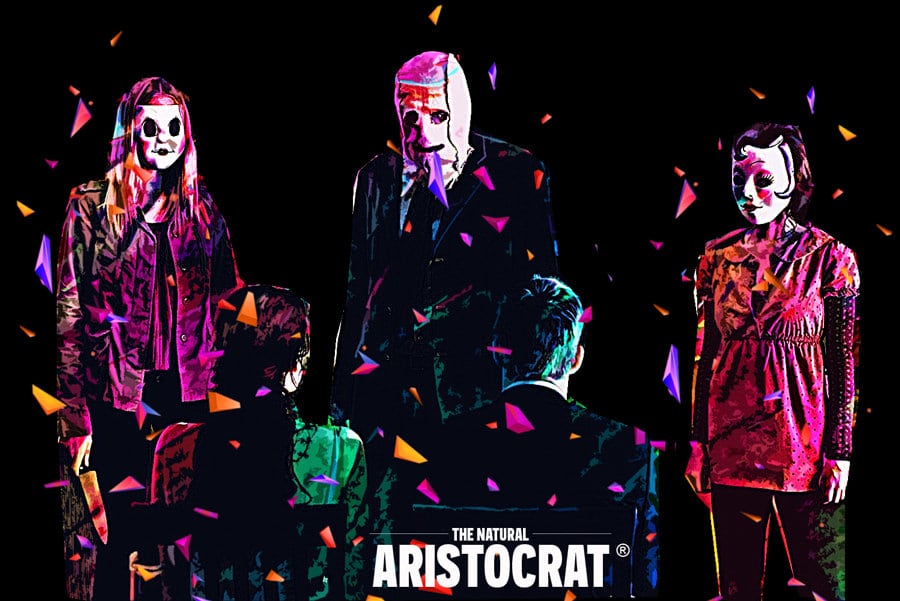
The Strangers Artwork by Nir Regev / The Natural Aristocrat® – Based on Photo Still by Universal Studios / Universal Pictures – Liv Tyler as Kristen McKay, Scott Speedman as James Hoyt, Laura Margolis as Pin-Up Girl, Kip Weeks as Man in Mask, and Gemma Ward as Dollface in The Strangers
Interview with Tom Hajdu of tomandandy on The Strangers
The Natural Aristocrat [Nir Regev]: What was the inspiration for The Strangers’ minimalistic, lonely ambience woven with moments of wild panic? The soundtrack felt reminiscent of composer Bernard Hermann’s work on Psycho, in terms of calmly soothing over the audience before a sudden burst of distilled terror.
tomandandy’s Tom Hajdu: The inspiration behind soundtrack for The Strangers had to do with two things: One, with perspective. A lot of the sounds that are louder in terms of volume or more prominent are actually soft sounds that are very closely miked. Like a Cello playing very, very softly but it’s actually quite loud. Relative to say a distorted, loud electric guitar which is actually very soft in the background. So, it’s playing with these types of perspectives that are non-traditional or unexpected.
The other one was this idea that a lot of the music is really in the silence and try to punctuate that silent space in slightly more thoughtful ways, rather than just try to fill the acoustic space. It was really leveraging ambience and silence as a big piece of the soundtrack. We certainly have a great admiration & respect for Bernard Herrmann’s work!
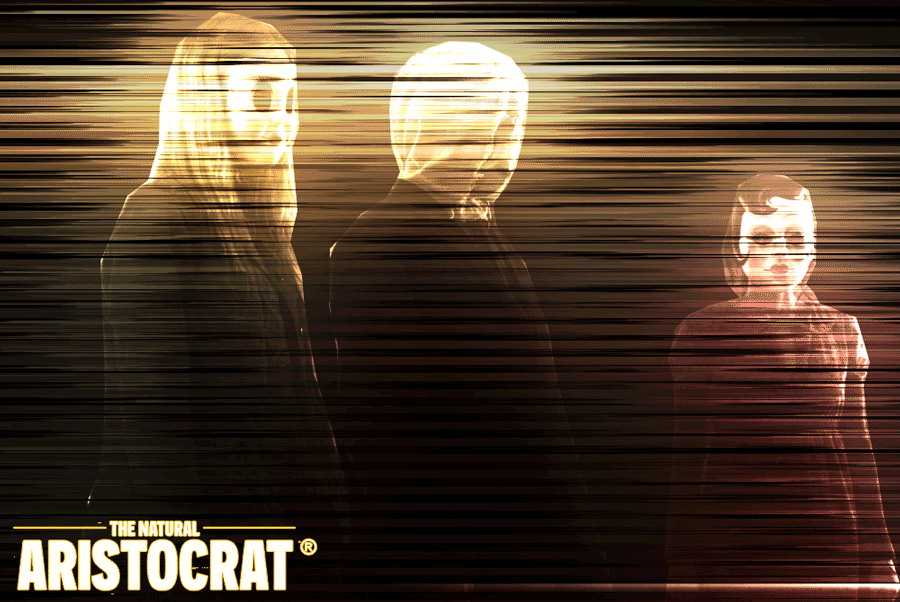
The Strangers Artwork by Nir Regev / The Natural Aristocrat® based on Photo Still by Universal Studios / Universal Pictures – THE STRANGERS, from left: Gemma Ward as Dollface, Kip Weeks as Man in Mask, Laura Margolis as Pin-Up Girl.
For me, the pinnacle track of The Strangers is “3 AM Knock” because of its foreboding stillness building into this crescendo ring of fear. It really feels like you’re stranded in the middle of nowhere at dusk with this stampeding dread from all sides. Not knowing what lies beyond the great unknown. What went into crafting that track?
I think it’s also the case that the film silence was a new kind of perspective on horror films. That gave us an opportunity to try and create a slightly different context for music. There was an opportunity there to try to create some slightly innovative approaches to the way in which the music was made.
On that “Opening” track for The Strangers, there’s an eerie, almost 60s era-Alien saucer sound around the middle of the track (1:05). Was that intentional? A subtle metaphor to an alien, home invader so-to-speak.
Yeah, there was a lot of intentionality in mixing strange sounds with familiar sounds! It was a combination of analog, synthetic, and ambient sounds, along with silence, put together in unusual ways. To create combinations that are not necessarily traditional in that respect, or expected.
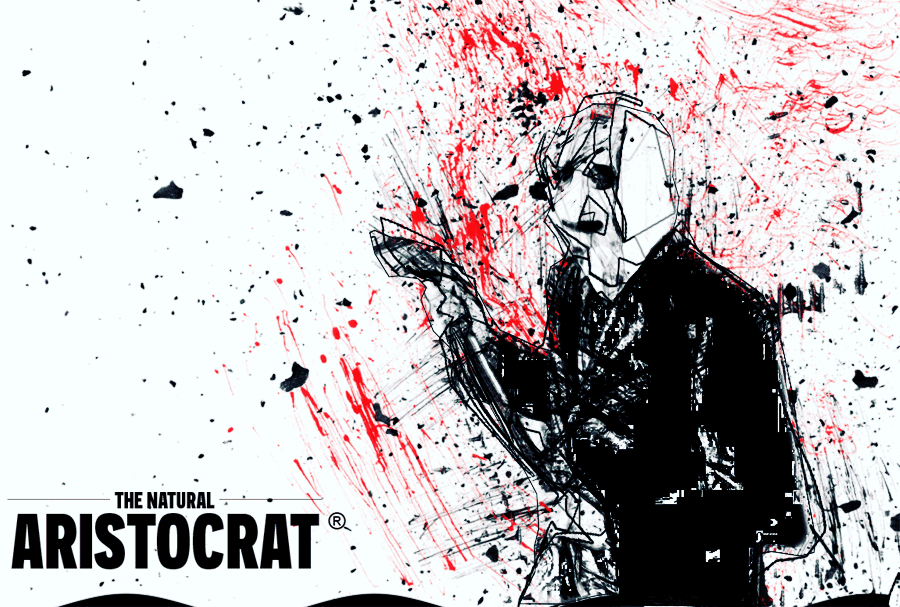
The Strangers Artwork by Nir Regev / The Natural Aristocrat® based on Photo Still by Universal Studios / Universal Pictures – Kip Weeks as Man in Mask in The Strangers
What instruments were used for The Strangers track “Angry”? It has a unique, screeching buildup to it.
Most of those sounds were made with cello, on process, and electric guitar.
What was the process like when tomandandy were developing The Strangers soundtrack? Was there a clear vision of what you wanted to accomplish immediately or did you experiment?
A lot of it was sitting in a dark room. Looking at the picture, the arc of the film, it goes from subdued & quiet to intensely loud. We were trying to figure out ways to make as little music as possible and rather have the music be part of the larger audio space.
Whether it’s the sound of an engine, the sound of an old record player skipping, or nature itself outside. That’s all part of the audio soundscape for the film. We wanted to take everything into consideration. A less is more situation. I feel (Director) Bryan Bertino’s vision for The Strangers was very successful.
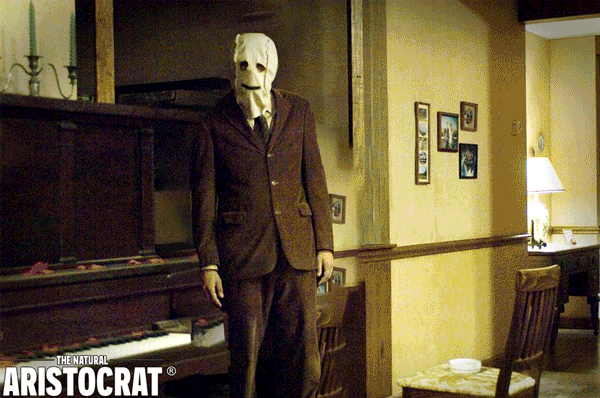
The Strangers Artwork by Nir Regev / The Natural Aristocrat® based on Photo Still by Universal Studios / Universal Pictures – Kip Weeks as Man in Mask in The Strangers
Director Brian Bertino once described a real life, childhood event inspiring the film’s iconic door knocking opening scene. Did tomandandy utilize any kind of similar personal experiences or memories while composing The Strangers’ soundtrack?
I feel composing for me is certainly a combination of all our experiences. We never lose anything, we take everything with us. Combining everything from emerging technologies to primal and visceral experiences.
We try to be open & available to the way the world is unfolding and the way it’s informed our lives over the years. I don’t think we try to filter anything if at all possible, everything is part of our palette.
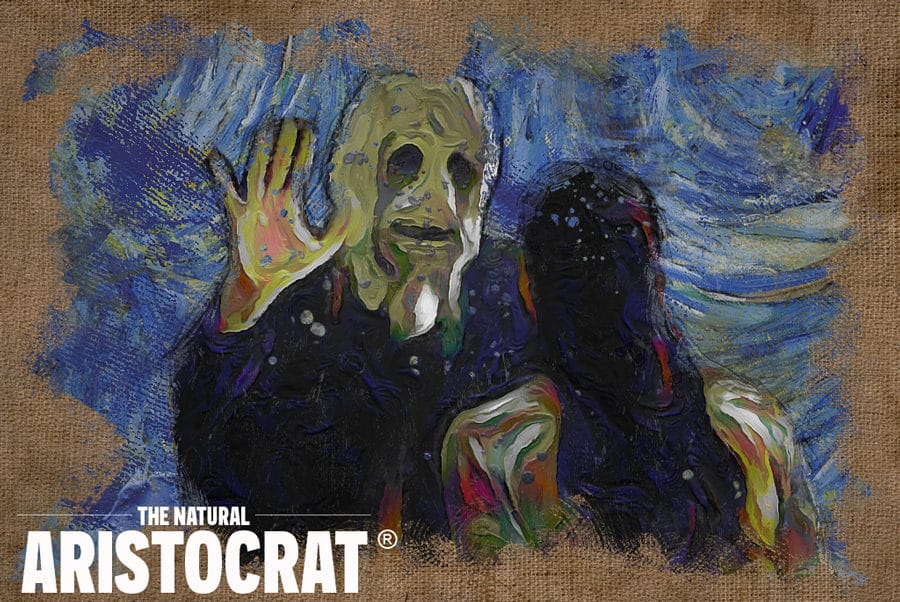
The Strangers Artwork by Nir Regev / The Natural Aristocrat® based on Photo Still by Rogue Pictures – THE STRANGERS, from left: Kip Weeks as Man in Mask and Liv Tyler as Kristen McKay
The soundtrack for ‘The Monster‘, another horror film by Director/Writer Bryan Bertino, evokes some Strangers nostalgia. Haunting piano was added on tracks like “Drink” and “Outside” which changed the tone in a noticeable way. What was it like to work on The Monster?
I think The Monster is similarly, a more modern way of looking at horror. We changed the instrumentation on there to combine classic horror scoring with some modern instrumentation and style.
What influenced the Resident Evil: Retribution soundtrack? In particular, the track “Flying Through the Air” which felt like an inspired fusion of electronic music and classical asian violin as its soundscape.
Yeah I feel with regards to the Resident Evil franchise, at that time we were trying to establish a sound for the brand. Which I think we managed to do! Once we established a style, I guess you could call it a language, we could create lots of different types of music within it. That track (“Flying Through the Air”) has that influence to some degree but it’s all couched in the sound of Resident Evil at that point.
Does tomandandy receive film scripts prior to creating soundtracks or more of a general theme and guideline of what the movie will be?
Yes, we often get the scripts before production has begun and speak to the producers & director about the musical direction before they’ve started shooting. There’s been times where we’ve worked on projects after they’ve been shot and edited as well. We’re comfortable working in either way. Usually directors like having those conversations very early on.
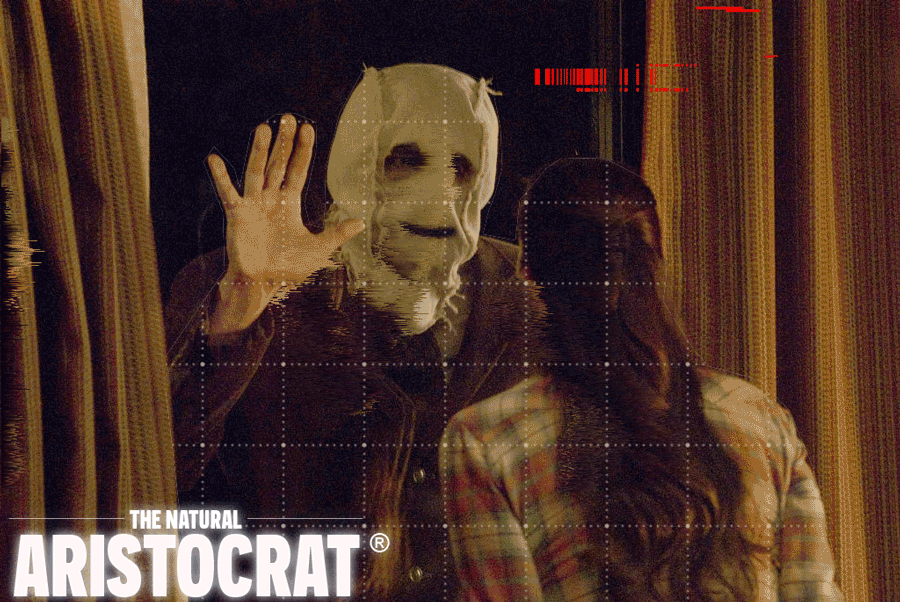
The Strangers Artwork by Nir Regev / The Natural Aristocrat® based on Photo Still by Rogue Pictures – THE STRANGERS, from left: Kip Weeks as Man in Mask and Liv Tyler as Kristen McKay
Are you ever asked to make adjustments mid-way or generally once the soundtrack is complete, it’s final?
Oh sure! I mean each project has its own life cycle in a way. Its own character in the way that it unfolds. We’re just very happy to be part of that process. It’s an organic process and so where we start is often not where we end up. I think that’s true for projects as a whole, they kind of take a life of their own and emerge to become what they were ultimately meant to be.
There’s a quote by Nintendo’s Shigeru Miyamoto, creator of the iconic Super Mario Bros. series, that, “A delayed game is eventually good, a bad game is bad forever.” Does this notion apply to music and its creative process as well in your opinion? As in, when you’re composing a track and something is just not working… Do you believe in trashing it and starting fresh? Or that if you engage with a track long enough, it’ll eventually become good?
Absolutely, I’m a big fan of the Brian Eno oblique strategy cards, which are cards you can use whenever you’re having a creative block. But I’m also a big fan of just starting from scratch, sometimes it’s good not to be precious about things.
It’s good to be receptive to the possibility of a creative spark because it can really come at any time. It takes a lot of hard work to orchestrate something, to get it just right. But also often times, it’s also useful to just try something new!
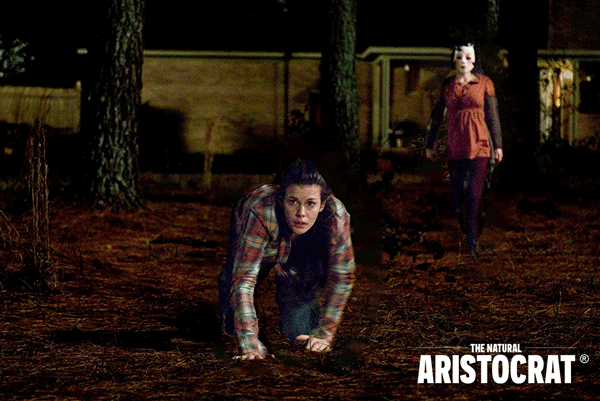
The Strangers Artwork by Nir Regev / The Natural Aristocrat® based on Photo Still by Universal Studios / Universal Pictures – THE STRANGERS, from left: Liv Tyler as Kristen McKay and Laura Margolis as Pin-Up Girl.
How does the collaboration process work with Andy [Milburn]? Are you usually in the studio at the same time these days?
It really depends, we’re very flexible because we’ve been working together for so long! Both of us have fairly broad skill sets and so it really depends on the project. We can both be in the same room or not in the same room. We can both be working on the same track or we can both be working on different tracks. It’s really project specific and context specific, also. It gives us a lot of flexibility to work on all kinds of projects and approach them in creative ways that can produce different aesthetic results.
What is tomandandy currently working on?
We’re currently waiting for a couple of projects to be green-lit, actually. There’s a number of projects where we’re just waiting for the signal… But at the moment we’re kind of in Coronavirus mode. I’m optimistic that things will open up soon, at least from what I’ve been told. Different productions in Canada and Australia for example, are being discussed. It’ll be interesting to see how things unfold as the pandemic subsides hopefully in the future.
Has there been a project that stood out to tomandandy as a favorite over the years?
You know, that’s a tough question because each project really has a life of its own. They have different qualities. The Strangers was certainly a wonderful and powerful experience. We’ve worked with Directors like Johannes Roberts on both 47 Meters Down films, Bryan Bertino (The Strangers) of course, Mark Pellington (The Mothman Prophecies), Jacob Estes (Mean Creek), Roger Avery (Killing Zoe) over time.
So, I’m not sure I could single out one as the very best but a lot of them could be really life changing experiences. Sometimes we’d go to the set for example and were asked to be more involved and sometimes less involved. What we’ve learned over time is to make the most of each of these projects and help to work in collaboration with the rest of the crew to make the project as best it can really be.
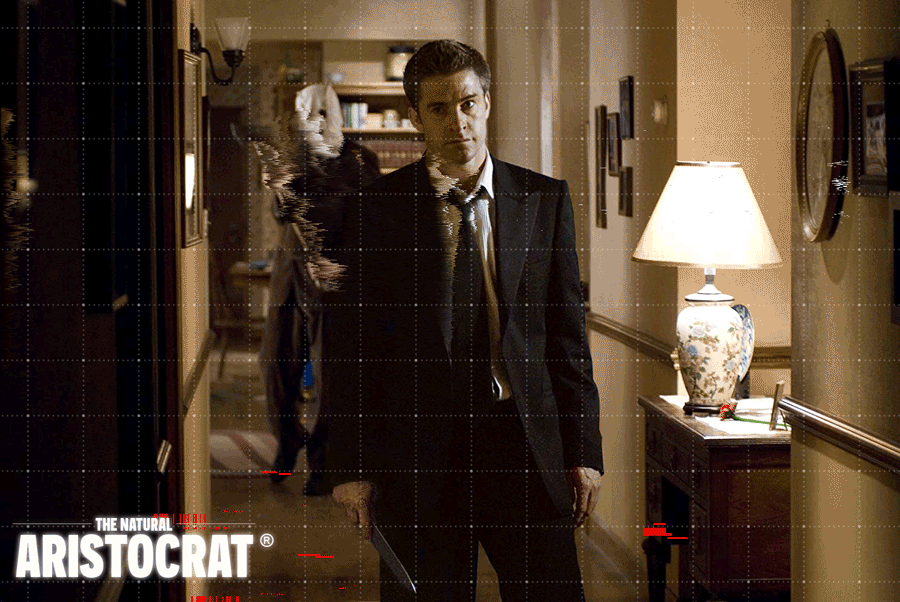
Artwork by Nir Regev / The Natural Aristocrat® based on Photo Still by Rogue Pictures – THE STRANGERS, from left: Kip Weeks as Man in Mask and Scott Speedman as James Hoyt.
Does critical reception of a soundtrack, good or bad, affect your own perception or interpretation of your work?
Great critical reception is a wonderful thing to have! But I don’t think our feelings are hurt if we don’t get it. There’s a lot of music and media that’s always floating in the ether, so not everybody can be acknowledged all the time. I don’t think we necessarily require the acknowledgement but we appreciate it. I feel where we have been fortunate is the feedback from artists, musicians, and directors who are familiar with our work. We really, consistently try to make the best music that we can for any project that we’re involved in.
Thanks Tom!
Thank you!
Killing Zoe
1993
Waking the Dead
2000
The Mothman Prophecies
2002
The Rules of Attraction
2002
Mean Creek
2004
The Hills Have Eyes
2006
The Strangers
2008
Resident Evil: Afterlife
2010
Resident Evil: Retribution
2012
Sinister II
2015
The Monster
2016
47 Meters Down
2017
47 Meters Down: Uncaged
2019
Follow tomandandy on Social Media:
Visit tomandandy.com and follow tomandandy on Soundcloud, YouTube, Facebook, and Twitter for their latest release updates!
Be sure to check out author J. Blake Fichera’s book Scored to Death: Conversations with Some of Horror’s Greatest Composers which features an earlier interview with tomandandy’s Tom Hajdu.
Read more interviews with the industry’s top talent in The Natural Aristocrat®’s Interview Articles section.
Nir Regev is the founder of The Natural Aristocrat. You can directly contact him at [email protected] for coverage consideration, interview opportunities, or general comments.




